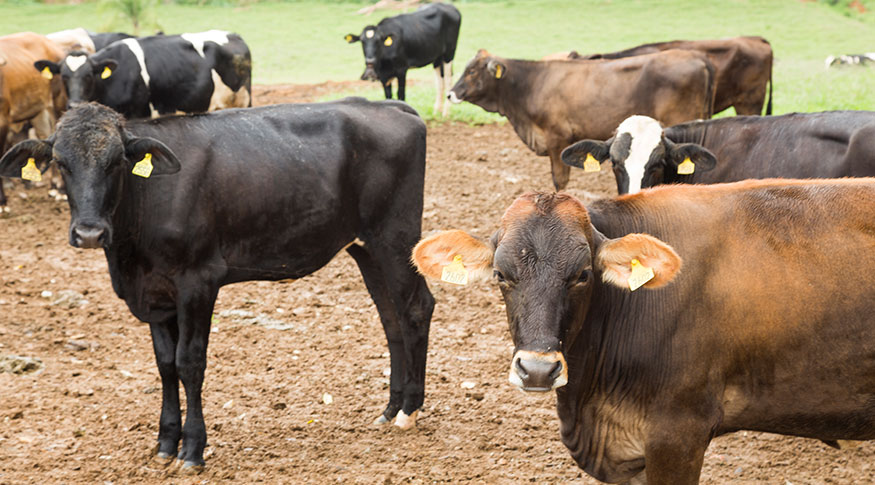Far beyond the Census of Agriculture
October 06, 2017 05h27 PM | Last Updated: October 11, 2017 09h32 AM
The IBGE conducts several, much reliable, surveys on the agricultural production of the country, covering different periods of time.
Since the beginning of this week, the 2017 Census of Agriculture has been the feature in the main papers, TV channels, and web sites. It is the most comprehensive survey on this Economic Sector, with nearly 18 thousand census takers visiting all the agricultural establishments of the country, which are currently estimated at more than 5.3 million.
Besides facing this challenge every ten years, the IBGE also carries out other surveys aimed at monitoring the rural sector: the Municipal Livestock Survey (PPM) and the Municipal Agricultural Survey (PAM), both annual surveys; the Survey of Stocks (twice a year); the Quarterly Livestock Surveys; and the Systematic Survey of Agricultural Production (LSPA), carried out monthly. All those surveys are used by advisors, university researchers, rural cooperatives and bodies, and by the three government spheres, as well.

Differences between data from IBGE and other sources are less and fewer
Among the several agricultural indicators produced by those surveys, one of the most demanded is the size of the national herd, registered in the PPM. This indicator comes from the records elaborated by the states and controlled by the Ministry of Agriculture, in the sanitary surveillances and vaccination of animals against diseases such as the foot-and-mouth disease. Therefore, the information is updated and reliable, since the immunization is compulsory and the record of the vaccinated animals corresponds to almost the total cattle herd of the country.
Other institutions also conduct their own surveys on the rural production and apply different statistical methodologies. It is the case of the USDA indicators (produced by the United States Department of Agriculture, a North-American governmental body) and the FNP consultancy, among others.
“As to the USDA, for instance, their counting and ours have been coinciding in the last few years. The difference between the two of them had been once of 20%, but nowadays it is just 3%, a very low figure, statistically speaking. Even more so when we take into consideration that the two institutes have each their own methodology”, says Octávio Costa de Oliveira, coordinator of Agriculture in the IBGE.
There is a regular technical exchange among the institutes, in order to pursue more accurate results. By comparing the different methodologies, Octávio explains that the USDA tries also to account for the clandestine herd in its estimates, whereas the FNP works with mathematic projections based mainly on the 2006 Census of Agriculture. “But none of the bodies resorts to the vaccination numbers used by the IBGE, for example”, highlights the coordinator.

Comparative table between USDA and IBGE data on cattle herd
Acknowledged excellence
Even with the diversity of information sources, the IBGE surveys are a reference for those who plan and experience the agricultural sector daily routine. They are the ones who fuel the country with the necessary knowledge for extensive policy making aiming at the Brazilian rural areas.
“The work carried out by the IBGE is amazing. A country such as Brazil cannot live without data. The Censuses, the surveys, are extremely relevant, because they make us able to plan tomorrow's Brazil. It is the IBGE which makes it possible to plan the future”, says EMBRAPA researcher and former-president, Eliseu Alves, who is a PhD in Agricultural Economy from the Purdue University, in the United States.
The IBGE surveys are very well accepted in the sector due to the technical quality of the statistical work and to the clarity with which the indicators are produced.
“The surveys are very useful because they have a very interesting methodology and collection system, and they are different from others in the market. The animal slaughter survey, for instance, has a time series built consistently over several years. The others are the others, we cannot compare them. The IBGE has a methodological aspect which is its major asset”, explains Professor Sérgio de Zen (from the Luiz de Queiroz College of Agriculture - Esalq, from the University of São Paulo-USP), who is also responsible for the livestock of the Center for Advanced Studies on Applied Economics (Cepea).

Convergence with the Ministry of Agriculture
In the field of agricultural production, specifically, the IBGE shares its tasks with Conab (National Supply Company), under the Ministry of Agriculture. The Institution started its surveys in the 1990s, with independent studies from those of the IBGE, which has dealt with such information since 1973.
However, since 2007, the IBGE and Conab have been trying to work together to get better quality information, even though they still carry out separate surveys. “We have been searching for a greater synergy with the Ministry of Agriculture to improve the statistical results more and more”, highlighted Octávio. Currently, the two institutions even put out their surveys on the same date.
Census of Agriculture will originate new annual survey on the sector
The 2017 Census of Agriculture will also make the implantation of a national register of rural establishments possible. It will generate a new survey for the sector: The National Sample Survey of Agricultural Establishments, which is meant to be carried out annually until the end of this decade.
“Just as I need the Population Census to give the basis of the PNAD, I also need the Census of Agriculture to provide me with the general information and define the sample size of the new survey. We need to know what each place, each area is like, before we set the sample. It is the basis”, says Antonio Florido, the technical manager of the Census of Agriculture.
Text: Rodrigo Paradella and Luiz Bello
Photo: Licia Rubinstein (cover) and Portal Brasil
Image: USDA and IBGE




















